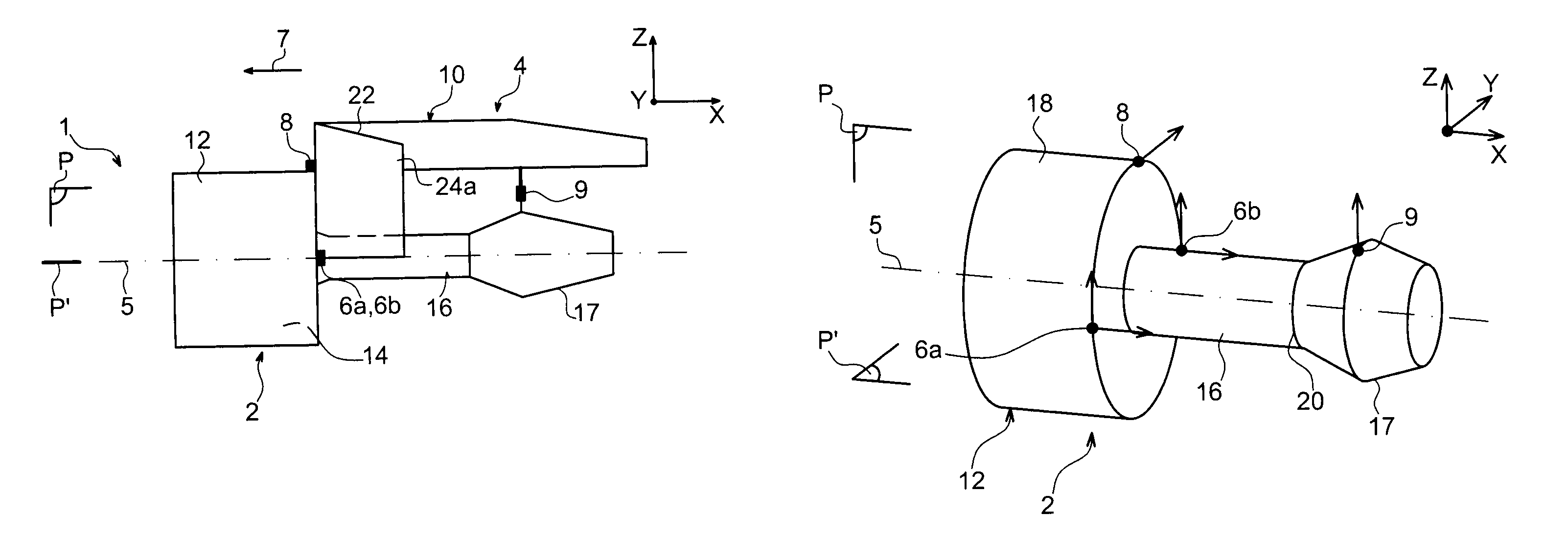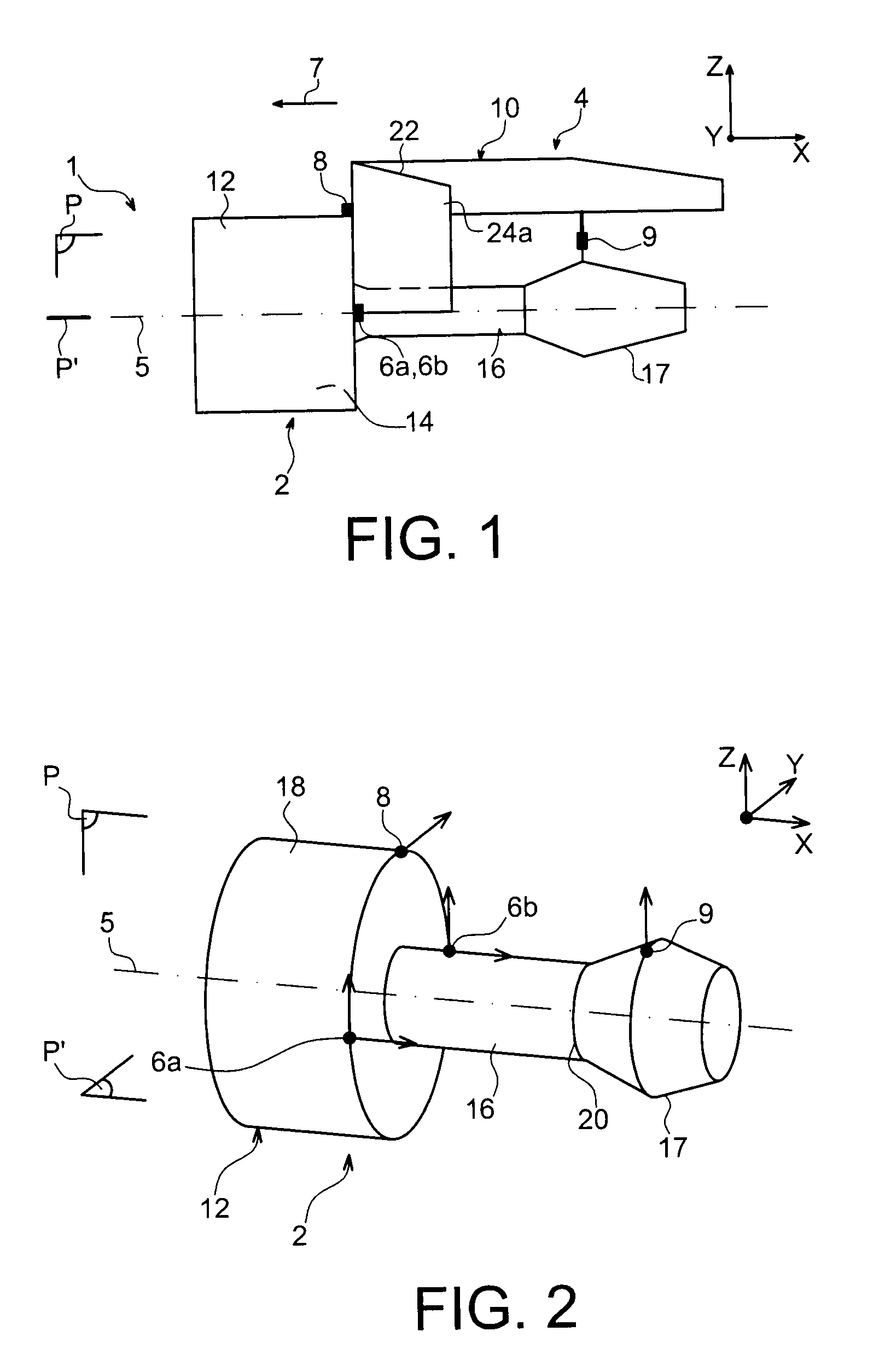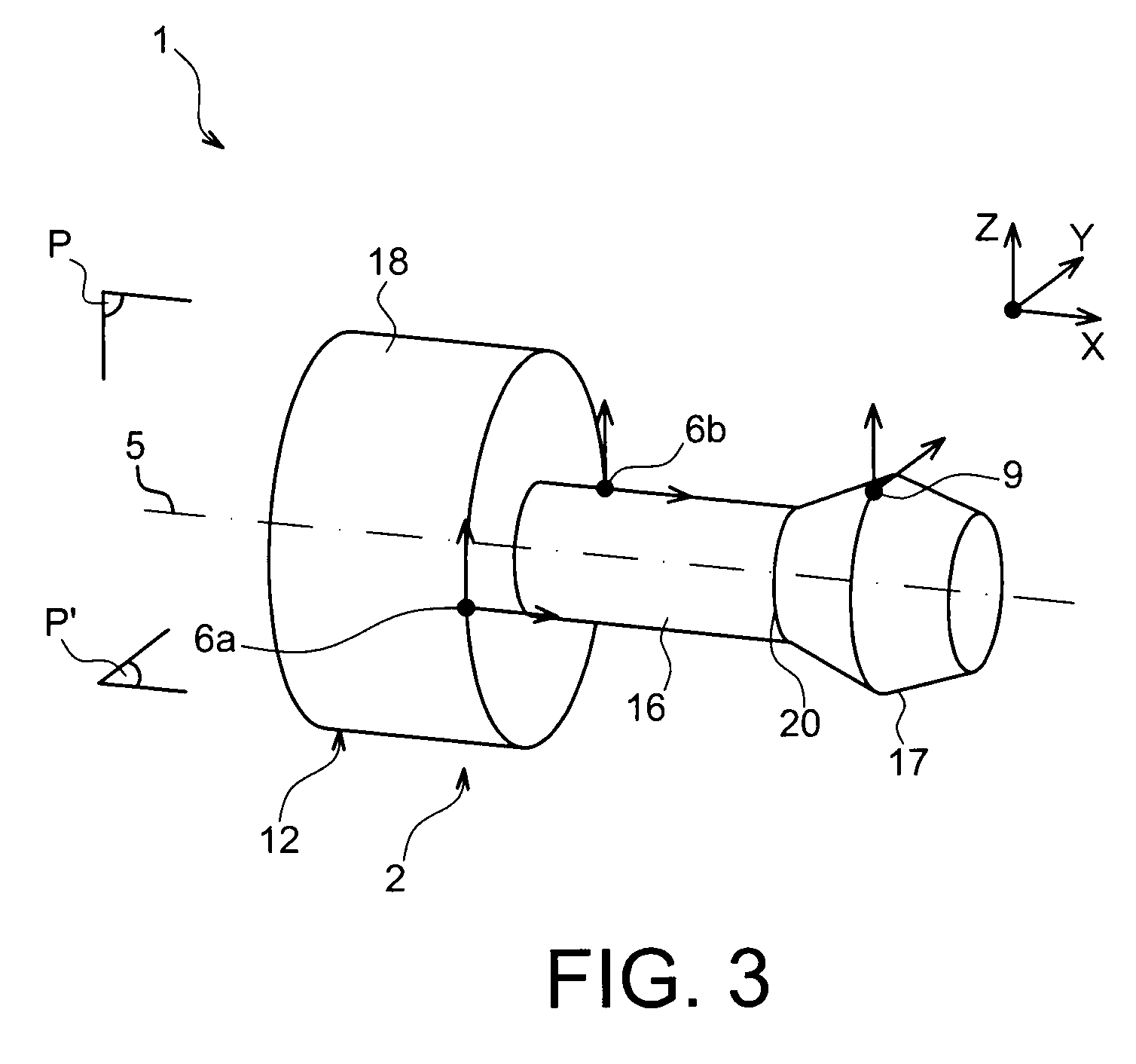Engine assembly for aircraft
a technology for aircraft engines and components, applied in machines/engines, liquid fuel engines, transportation and packaging, etc., can solve the problems of less significant longitudinal bending, premature engine wear, and increased friction between the rotating compressor and the turbine blades, so as to reduce the bending
- Summary
- Abstract
- Description
- Claims
- Application Information
AI Technical Summary
Benefits of technology
Problems solved by technology
Method used
Image
Examples
Embodiment Construction
[0037]In reference to FIG. 1, one sees an aircraft engine assembly 1 according to a first preferred embodiment of the present invention, this assembly 1 being designed to be fixed under a wing of the aircraft (not illustrated).
[0038]Globally, the engine assembly 1 comprises a turbojet engine 2, an engine mount 4, as well as a plurality of engine attachments 6a, 6b, 8, 9 ensuring fixing of the turbojet engine 2 under this engine mount 4 (attachment 6b being concealed by attachment 6a in this FIG. 1). For information, it is noted that the assembly 1 is designed to be surrounded by a nacelle (not shown) and that the engine mount 4 comprises another series of attachments (not shown) making it possible to ensure the suspension of this assembly 1 under the wing of the aircraft.
[0039]In the remainder of the description, by convention, X designates the direction parallel to a longitudinal axis 5 of the turbojet engine 2, Y the direction oriented transversely in relation to this same turboje...
PUM
 Login to View More
Login to View More Abstract
Description
Claims
Application Information
 Login to View More
Login to View More - R&D
- Intellectual Property
- Life Sciences
- Materials
- Tech Scout
- Unparalleled Data Quality
- Higher Quality Content
- 60% Fewer Hallucinations
Browse by: Latest US Patents, China's latest patents, Technical Efficacy Thesaurus, Application Domain, Technology Topic, Popular Technical Reports.
© 2025 PatSnap. All rights reserved.Legal|Privacy policy|Modern Slavery Act Transparency Statement|Sitemap|About US| Contact US: help@patsnap.com



